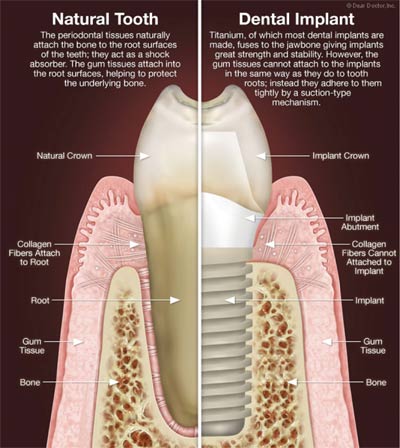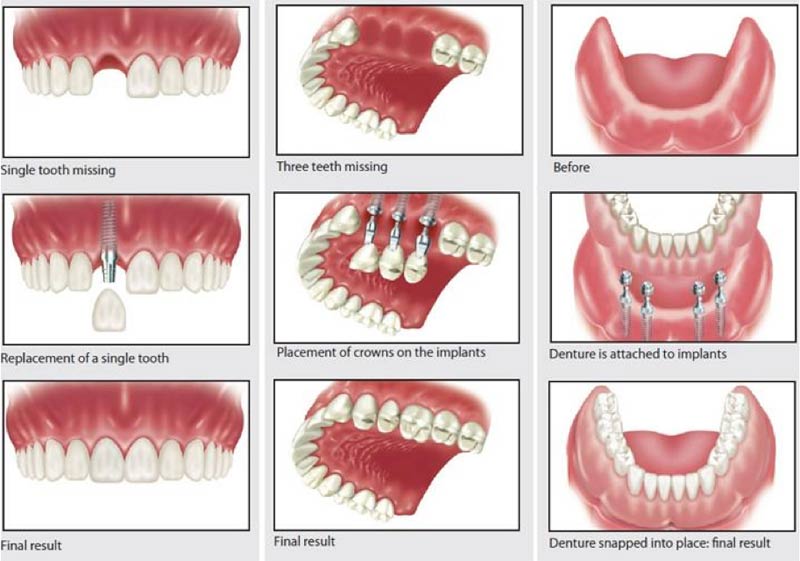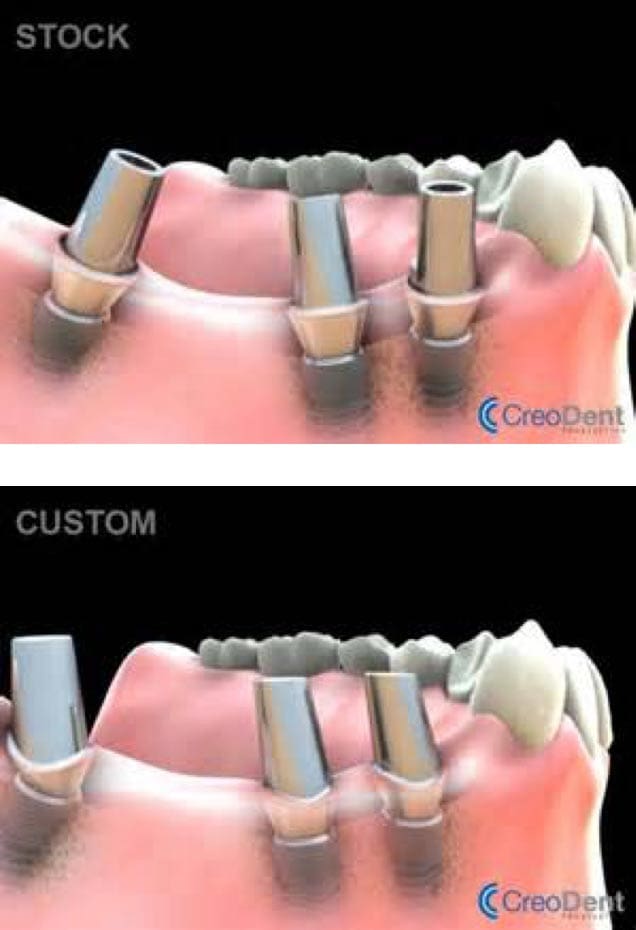Dental Implants
Home | Our Procedures | Dental Implants
What Are Dental Implants?
Dental implants are titanium fixtures that are placed in the bone. The fixtures are shaped like screws with threads that engage the bone in order to allow intimate contact with the titanium surface and the bone of the jaw. During the healing process, the bone grows directly to the implant forming a stable platform for the final crown (porcelain and metal in the shape of a tooth), which is made by your dentist. Dental implants are highly successful if planned, placed, and restored properly. We will work closely with your dentist to ensure that the implant process is completed efficiently, and that the end result achieves all of the esthetic and functional goals of your individual treatment plan.
Treatment Planning:
Radiographs and a thorough exam will be conducted to evaluate the bone and gum tissue. Often, a three dimensional radiograph called a cone beam CT scan will be done in order to accurately measure and plan for the implant. If there is inadequate bone or soft tissue, surgery to prepare the site for implants may be needed. These may include bone grafting, sinus lift, or gingival (gum) grafting. If needed, virtual planning using computer software can be completed prior to surgery to ensure the most precise placement of the implants.
Surgery
Surgical placement of the implant is usually performed under IV sedation. Once sedated, the area of the planned implant is anesthetized (numbing medicine). A small incision is made in the gum tissue and a series of specialized drills are used to create the space for the implant. The implant is then placed into the bone. Depending on several factors, a healing abutment may be placed that sticks slightly out of the gum (single stage protocol), or the gum tissue may be sutured over the implant (two-stage protocol) to allow the implant to heal undisturbed. Post-operative care includes antibiotics, pain medicine, maintaining excellent oral hygiene, and avoiding chewing in the area of the implant placement.
Healing/Uncovery
In order for the bone to grow to the implant surface, the implant must be undisturbed during the initial healing phase. This takes 3-4 months for the lower jaw, and 4-6 months for the upper jaw due to differences in bone density. If desired, a temporary denture can be made by your dentist to wear during the healing phase for esthetic purposes. At the end of this healing time, the implant is ready for uncovery if a two-stage protocol was used. Uncovery is not necessary if a single stage protocol is used. The uncovery procedure is typically performed under local anesthesia (numbing medicine) and involves making a small incision directly over the implant. A healing abutment that sticks slightly above the gum is then placed.
Final Restoration
The final crown (tooth) will be made by your dentist after the implant has healed. In order for the crown to be attached to the implant that is now in the bone, a final abutment is needed as the connection. There are two types of final abutments: prefabricated and custom. A prefabricated abutment is a stock abutment made by the manufacturer, and is often used for straight-forward restorations and for back teeth. A custom abutment involves taking an impression, and then allowing a dental laboratory to make an abutment for your specific restoration. The custom abutment is best for difficult restorations or highly visible areas such as upper front teeth. Either your dentist or your surgeon can deliver the abutment prior to crown fabrication.
Overall, dental implants are highly successful. We look forward to making sure you have a great experience throughout every step of the process!



